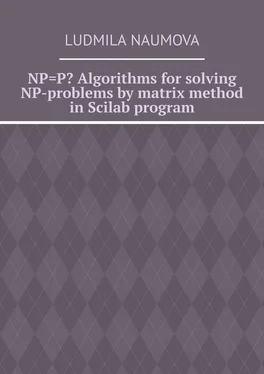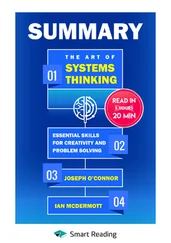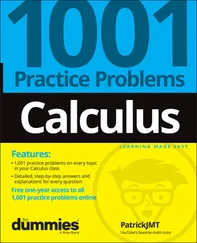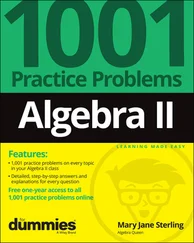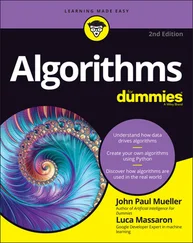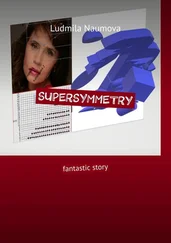Ludmila Naumova - NP=P? Algorithms for solving NP-problems by matrix method in Scilab program
Здесь есть возможность читать онлайн «Ludmila Naumova - NP=P? Algorithms for solving NP-problems by matrix method in Scilab program» — ознакомительный отрывок электронной книги совершенно бесплатно, а после прочтения отрывка купить полную версию. В некоторых случаях можно слушать аудио, скачать через торрент в формате fb2 и присутствует краткое содержание. ISBN: , Жанр: Физика, Прочая научная литература, Математика, на английском языке. Описание произведения, (предисловие) а так же отзывы посетителей доступны на портале библиотеки ЛибКат.
- Название:NP=P? Algorithms for solving NP-problems by matrix method in Scilab program
- Автор:
- Жанр:
- Год:неизвестен
- ISBN:9785449373021
- Рейтинг книги:3 / 5. Голосов: 1
-
Избранное:Добавить в избранное
- Отзывы:
-
Ваша оценка:
NP=P? Algorithms for solving NP-problems by matrix method in Scilab program: краткое содержание, описание и аннотация
Предлагаем к чтению аннотацию, описание, краткое содержание или предисловие (зависит от того, что написал сам автор книги «NP=P? Algorithms for solving NP-problems by matrix method in Scilab program»). Если вы не нашли необходимую информацию о книге — напишите в комментариях, мы постараемся отыскать её.
